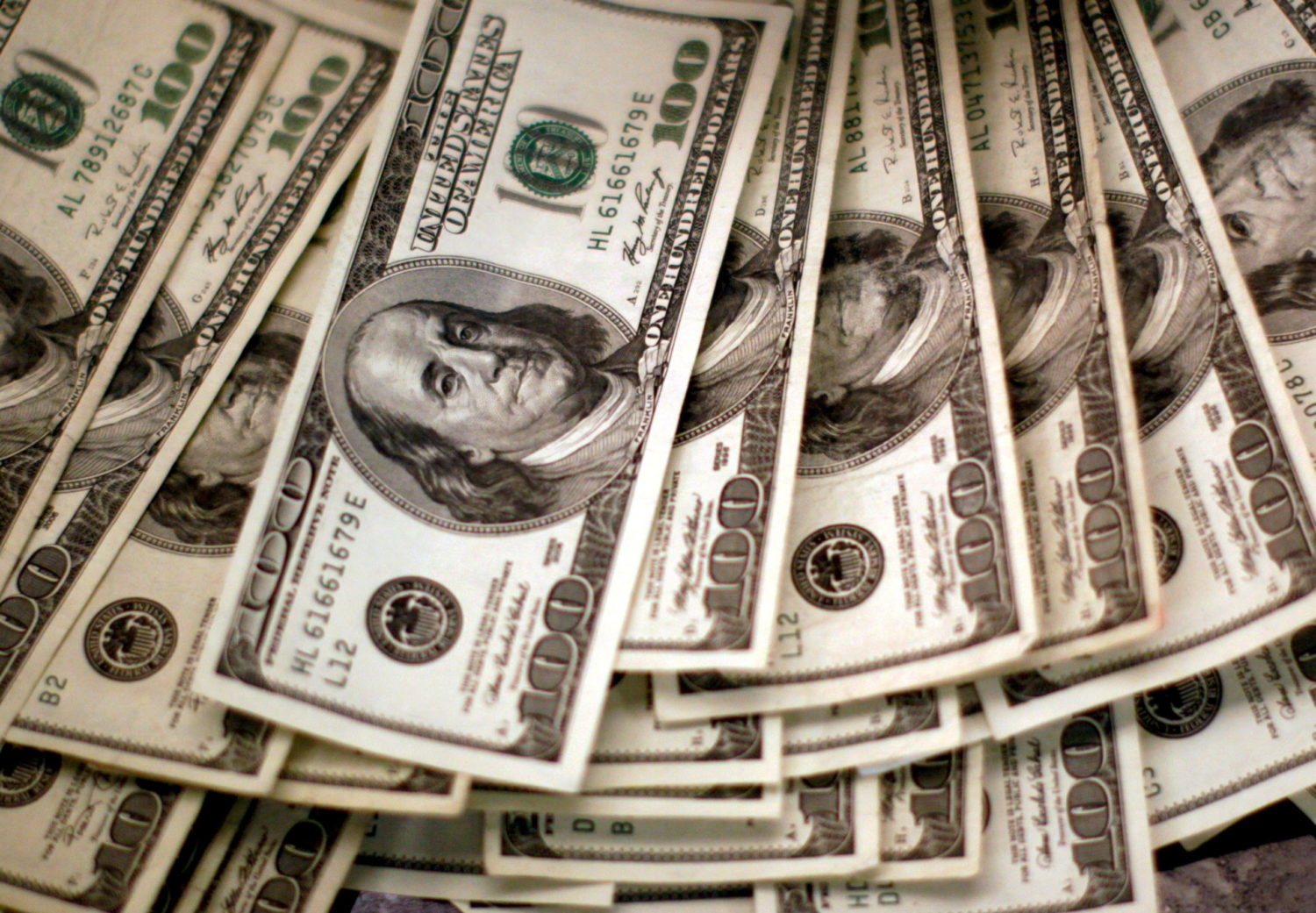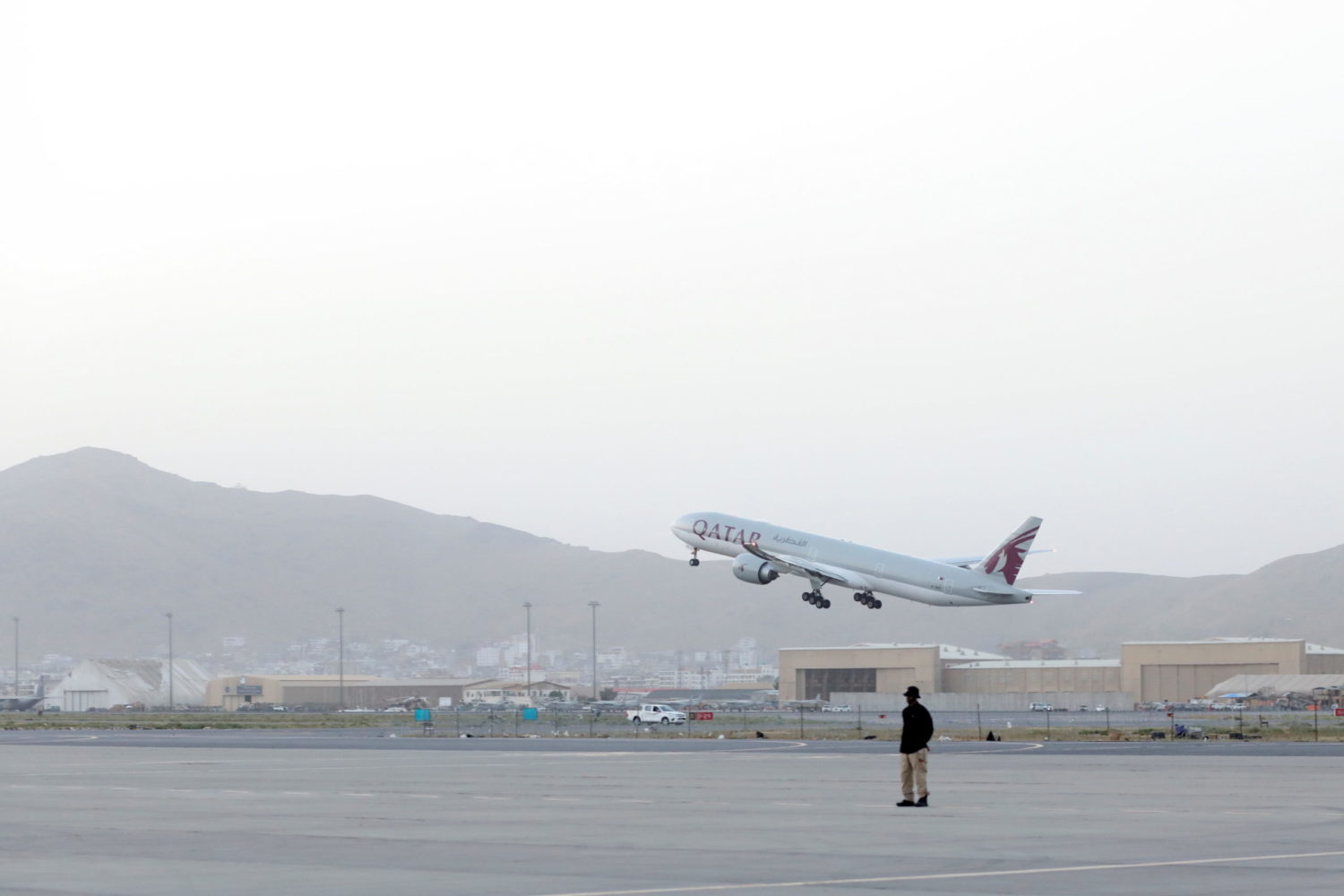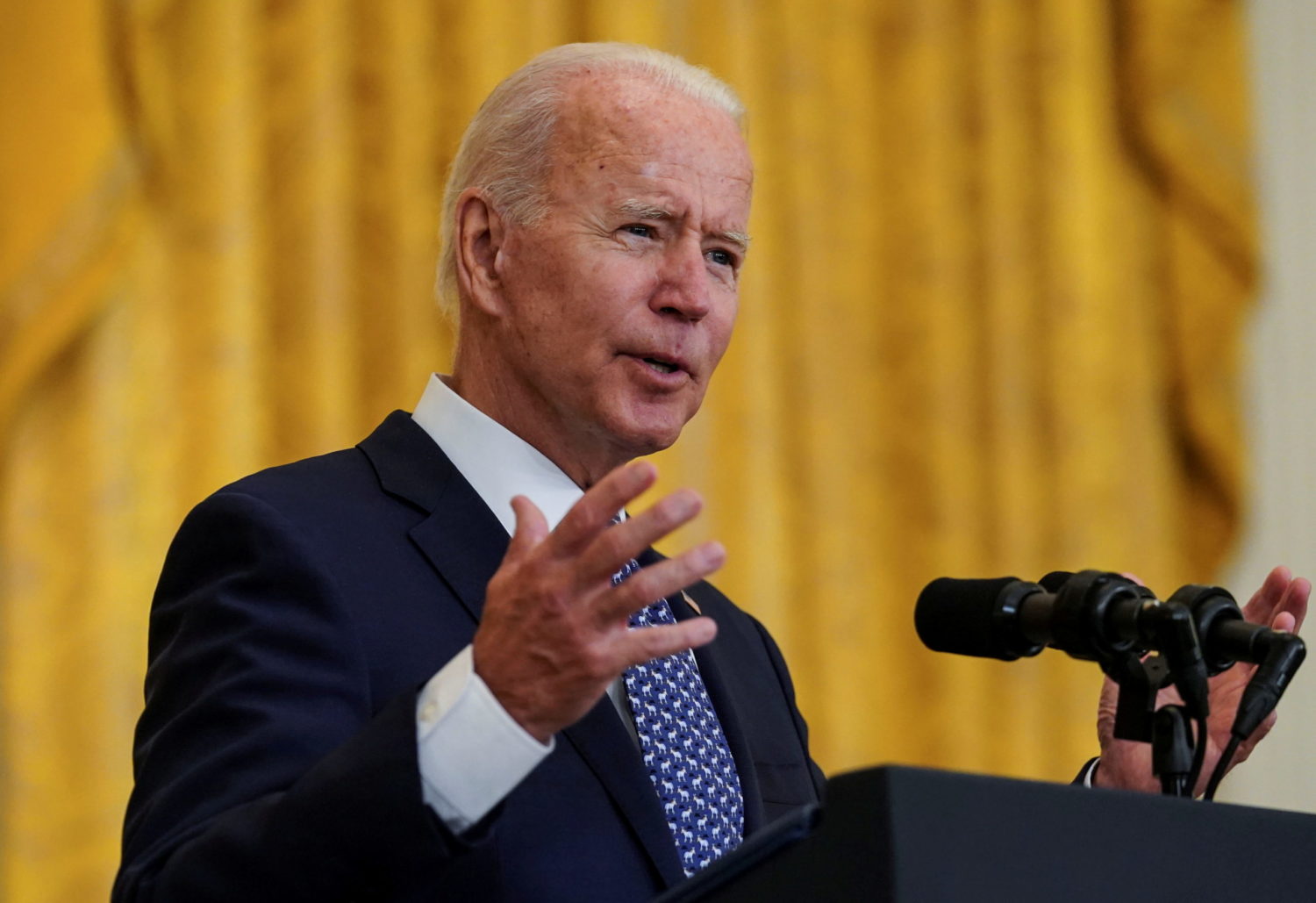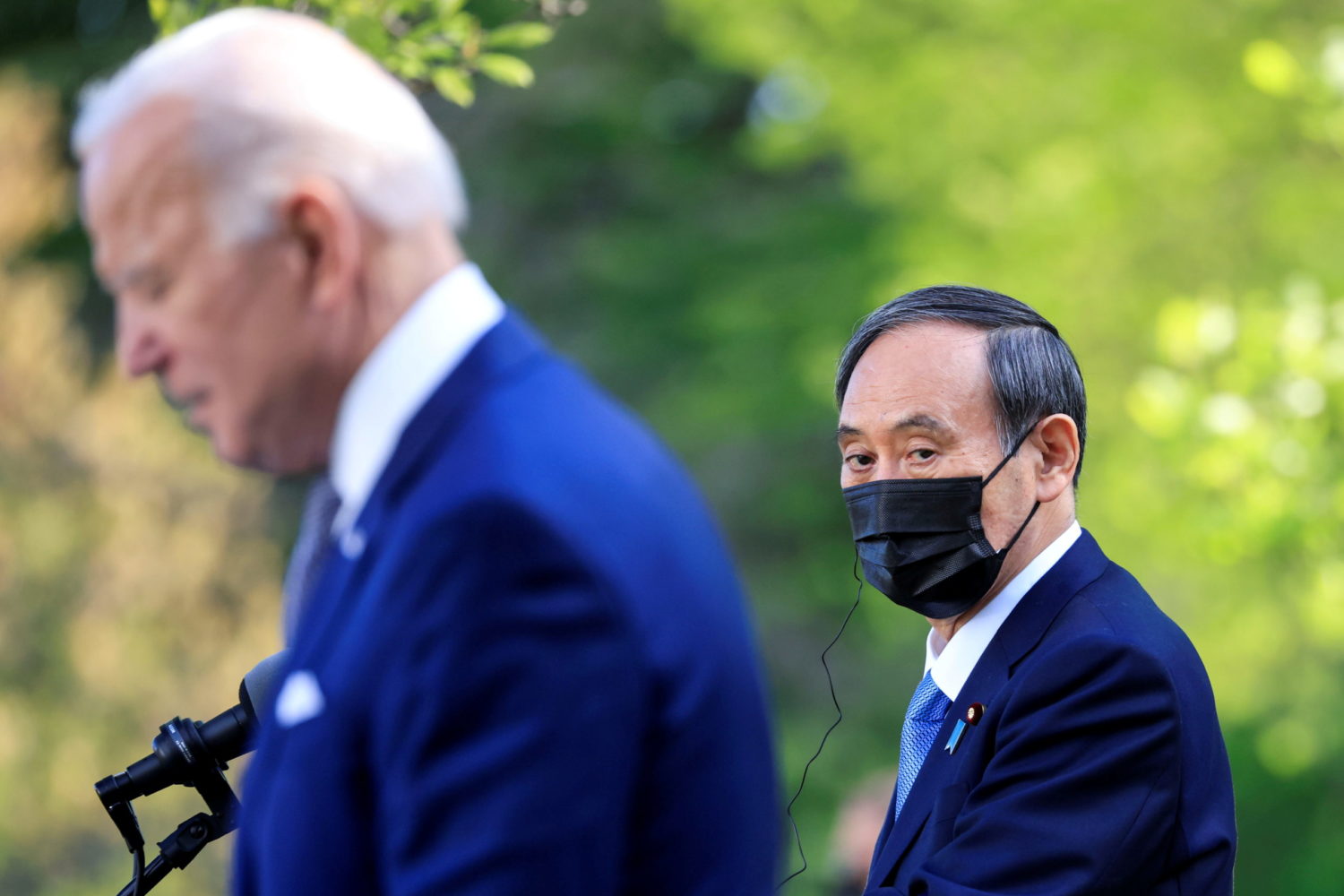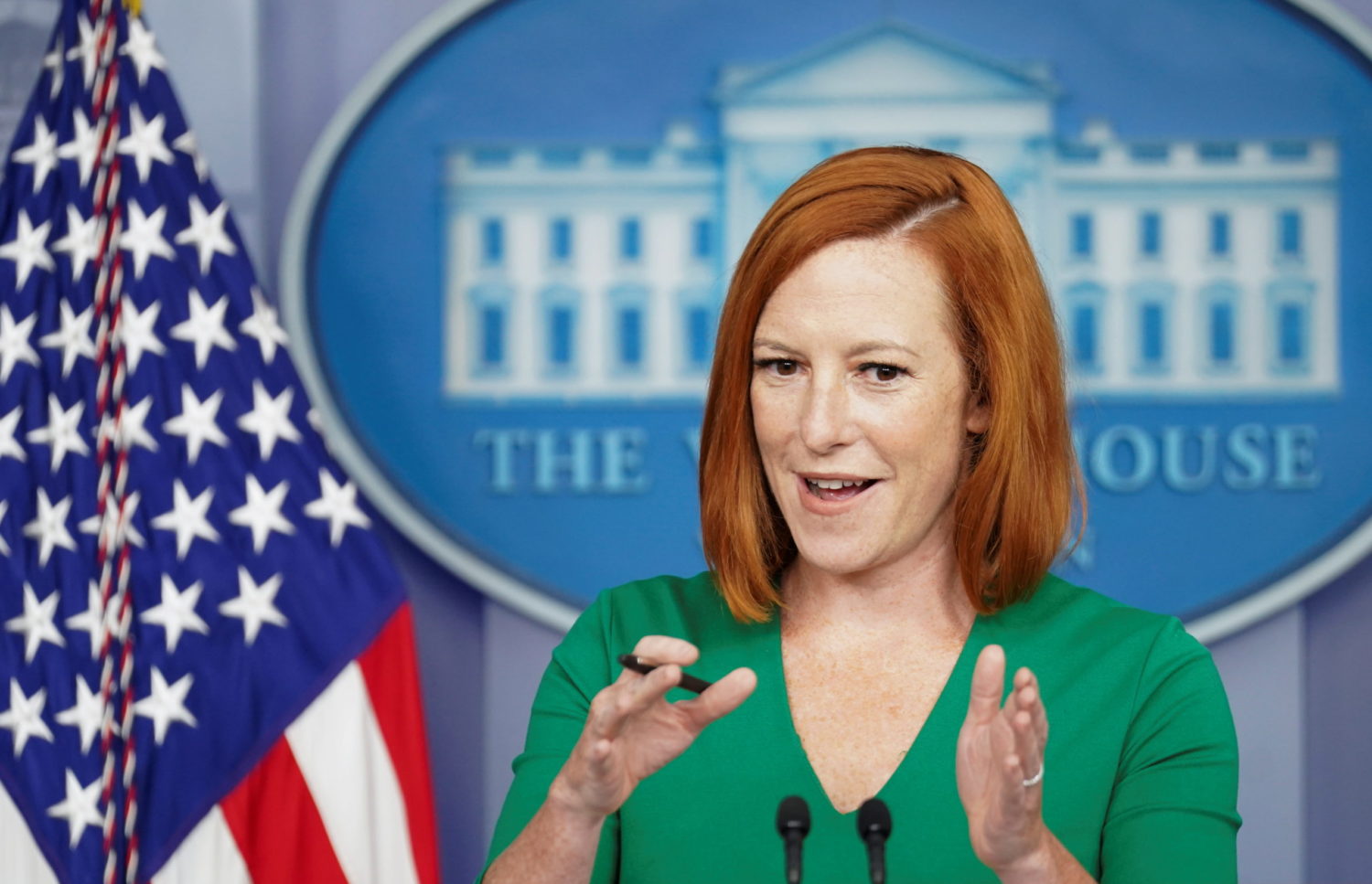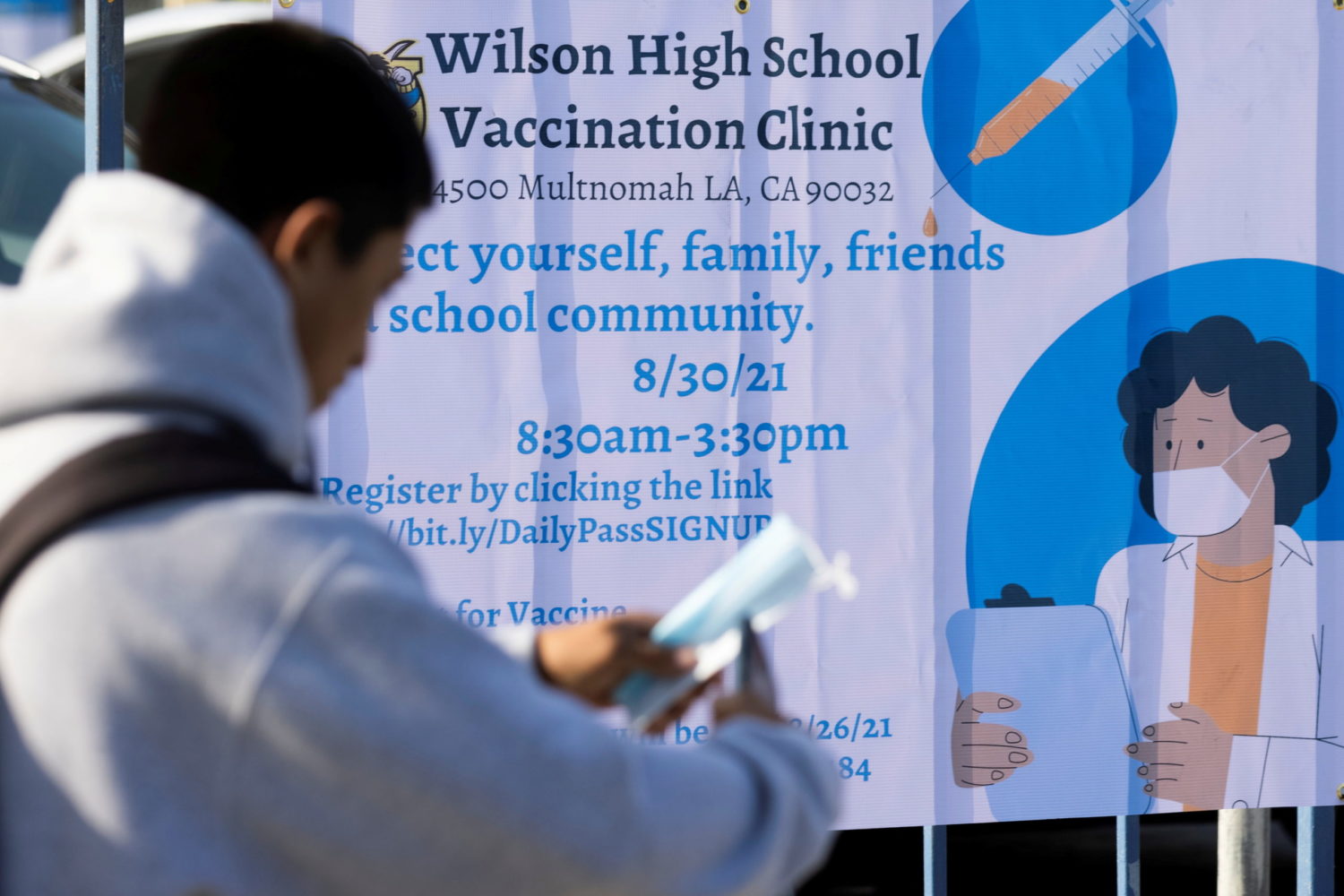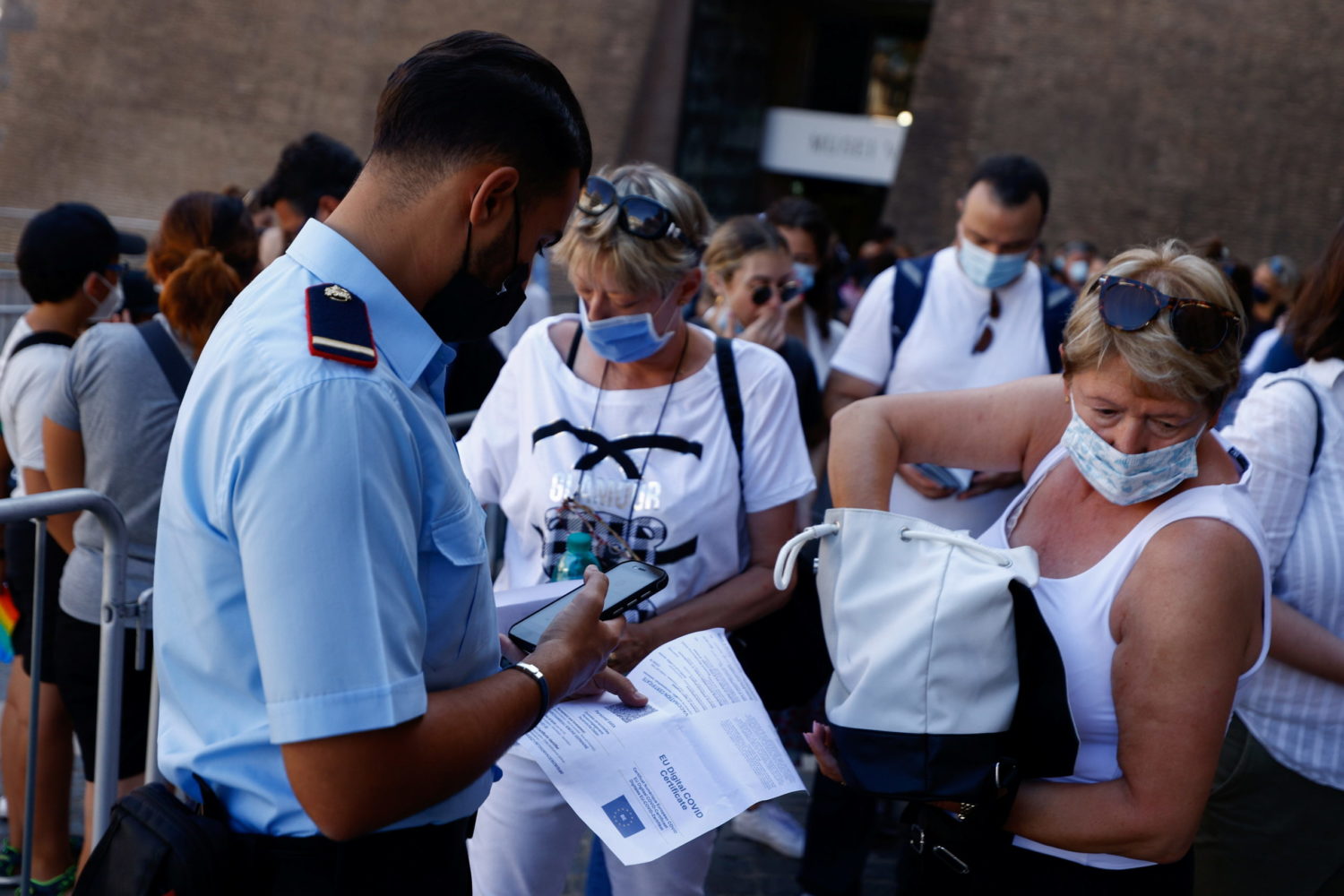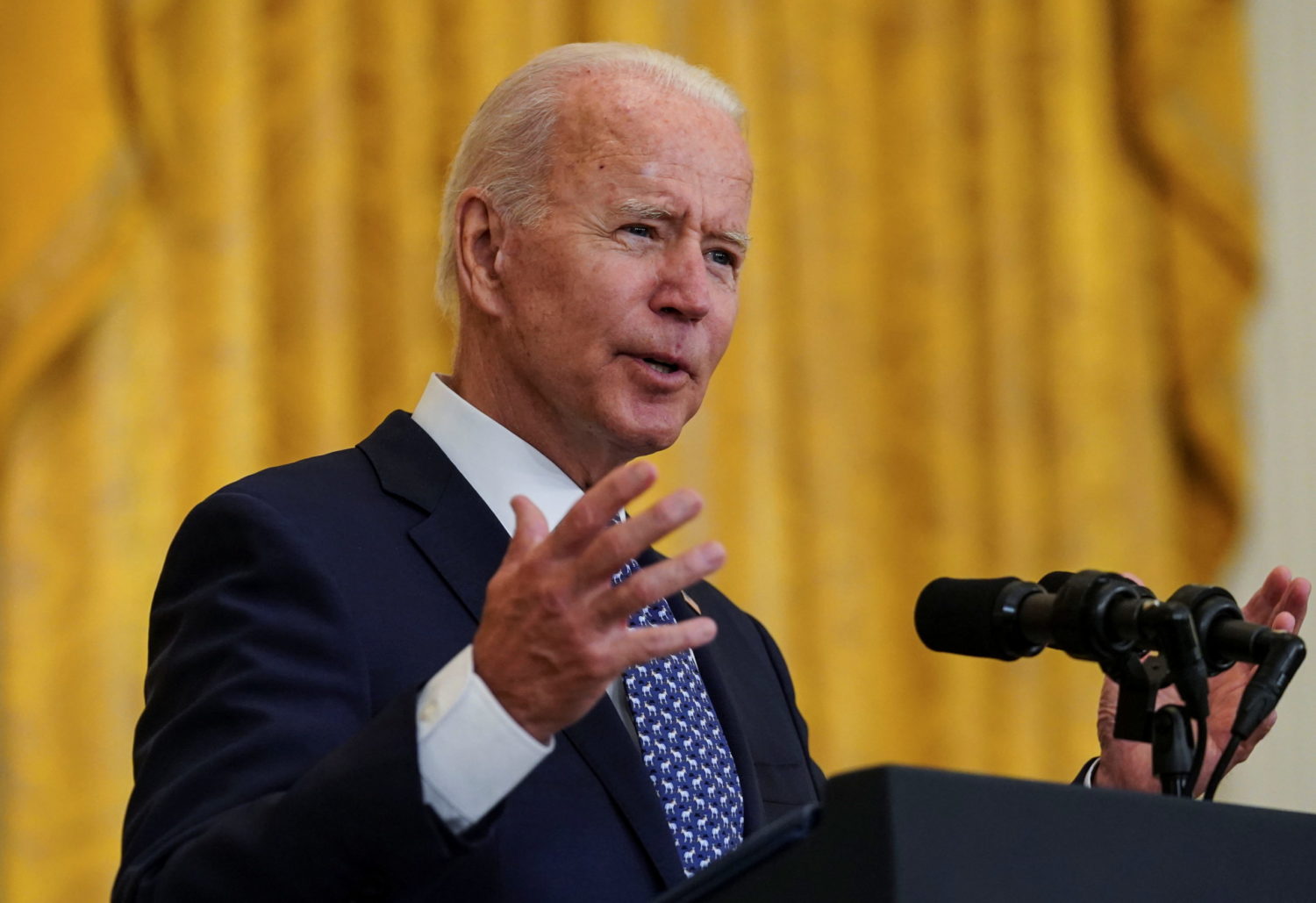
By Jeff Mason, Ahmed Aboulenein and Trevor Hunnicutt
WASHINGTON (Reuters) -President Joe Biden took aim on Thursday at vaccine resistance in America, announcing policies requiring most federal employees to get COVID-19 vaccinations and pushing large employers to have their workers inoculated or tested weekly.
The new measures, which Biden laid out in remarks from the White House, would apply to about two-thirds of all U.S. employees, those who work for businesses with more than 100 workers.
“We’ve been patient,” Biden told the tens of millions of Americans who have declined to get coronavirus shots. “But our patience is wearing thin, and your refusal has cost all of us.”
Taken together, the policies and speech represented Biden’s most aggressive steps yet to prod Americans resistant to getting shots as the fast-spreading Delta variant sparks a new wave of sickness and death.
The surge has posed increased risk not just to the country but to a president who ran on promises to get control of the pandemic. Biden’s approval ratings have sagged since he said in July the United States was “closer than ever to declaring our independence from a deadly virus.”
Biden’s latest moves are expected to be the subject of political and legal challenges.
Despite a full-throttled campaign by the Biden administration urging Americans to get the free and widely available vaccines, just over 62% of eligible Americans https://covid.cdc.gov/covid-data-tracker/#vaccinations_vacc-total-admin-rate-total are fully vaccinated, according to the U.S. Centers for Disease Control and Prevention.
On Thursday, Biden warned that “we’re in a tough stretch and it could last for a while.”
Infectious disease and health policy experts said the mandates are unlikely to significantly change infection rates quickly.
Still, they would help against potential future waves of the virus, reducing deaths and hospitalizations and alleviating the stress on the healthcare system, said Georgetown University’s Dr. Jesse Goodman, a former chief scientist at the U.S. Food and Drug Administration.
“It’s absolutely the right thing to do,” he said. “Ideally everyone would have been vaccinated already.”
‘FEAR, CONTROL AND MANDATES’
In a televised speech running a bit under half an hour, the Democratic president accused “a distinct minority of elected officials” who have resisted mask and vaccine mandates on freedom-of-choice and economic grounds as “making people sick.”
The White House COVID-19 recovery plan https://www.reuters.com/world/us/bidens-covid-19-strategy-thwarted-by-anti-vaxxers-delta-variant-2021-07-29 was based on the vast majority of eligible Americans being vaccinated this year. But the public health issue has become politicized, with a vocal minority refusing the shots and mask mandates.
Florida Republican Governor Ron DeSantis issued an executive order in July blocking mask mandates in schools.
Administration medical officials have said over 97% of people hospitalized with COVID-19 are not vaccinated, and those people account for an even higher share of deaths.
Cathy McMorris Rodgers, the senior Republican on the House of Representatives committee that oversees health policy, said Biden “is using fear, control, and mandates.”
The Republican National Committee said it intends to sue the Biden administration over the vaccine mandate.
Under Biden’s plan, the administration will also require vaccinations for more than 17 million healthcare workers at hospitals and other institutions that participate in Medicare and Medicaid social programs for poor, disabled and older Americans.
Biden previously required that federal employees be vaccinated or get tested. Federal workers now have 75 days to get vaccinated, or face termination unless they fall into limited exemption categories.
Federal workers unions suggested on Thursday they would accept the vaccine mandate.
SUBSTANTIAL FINES
The U.S. Labor Department’s Occupational Safety and Health Administration (OSHA) plans to take enforcement actions against private companies that do not comply with the vaccine mandate, with substantial fines of nearly $14,000 per violation.
The administration is also calling on entertainment venues to require tests or shots and for states to adopt mandates for school employees. It is also multiplying the fines https://www.reuters.com/world/us/us-doubling-fines-travelers-not-wearing-masks-2021-09-09 charged to people who fail to wear masks on airplanes, trains and buses.
It plans as well to ramp up testing capacity for the virus.
Biden will use authority under the Defense Production Act to spur industry to accelerate production of the tests, and big retailers including Walmart Inc , Amazon.com Inc <AMZN.O> and Kroger Co are expected to sell the tests at cost for the next three months to make them more affordable.
Critics have said the Biden administration has not done enough on testing during its seven months in office. Still, the new demand for tests could tax already strained suppliers.
Administration officials believe the full recovery of the U.S economy depends on blunting the spread of the virus, the key focus of the president since entering office in January.
The disease has killed more than 654,000 people in the United States, and deaths and hospitalizations have been rising sharply as the easily transmissible Delta variant of the virus spreads. https://tmsnrt.rs/3A1KHg3
The spread of the Delta variant has raised concerns as children head back to school, while also rattling investors, upending company return-to-office plans and tamping down https://www.reuters.com/world/us/us-job-growth-slows-sharply-august-unemployment-rate-falls-52-2021-09-03 hiring.
The White House also plans to offer booster shots providing additional protection to those who are fully vaccinated. But supplies are limited and the World Health Organization has begged rich countries to pause booster programs until more people worldwide are inoculated.
But with Delta causing more symptomatic breakthrough infections among fully inoculated individuals, most vaccinated Americans want a booster, a recent Reuters/Ipsos opinion poll found. Boosters could begin the week of Sept. 20.
“Get vaccinated,” Biden urged in closing his speech.
(Reporting by Jeff Mason, Ahmed Aboulenein and Trevor Hunnicutt; Additional reporting by Steve Holland, David Shepardson and Susan Heavey; Writing by Jeff Mason, Steve Holland and Trevor Hunnicutt; Editing by Heather Timmons, Howard Goller and Peter Cooney)
